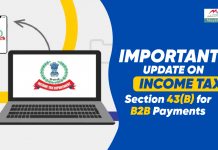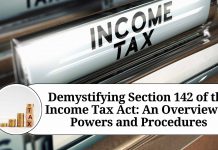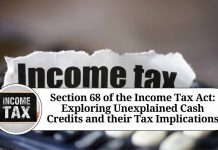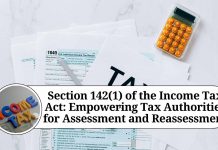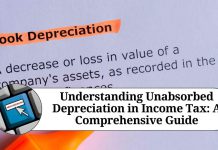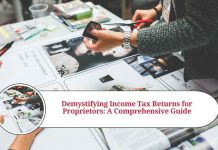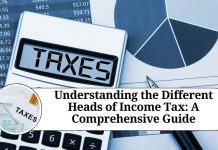Introduction
The Income Tax Act, 1961 is a comprehensive statute that lays down the provisions for the taxation of income earned by individuals, companies, and other entities. One such provision is Section 149 of the Income Tax Act, which deals with the time limit for issuing notices and orders. In this blog post, we will discuss the various aspects of Section 149 and its implications.
Overview of Section 149
Section 149 of the Income Tax Act deals with the time limit for issuing notices and orders. It lays down the time limit within which the Assessing Officer (AO) can issue notices or orders to taxpayers under various sections of the Income Tax Act.
Time Limit for Issuing Notice
Section 149 lays down the time limit for issuing a notice to a taxpayer under various provisions of the Income Tax Act. The time limit varies depending on the type of notice that is being issued. For example, under Section 143(2), the AO can issue a notice to the taxpayer within six months from the end of the financial year in which the return was filed. Similarly, under Section 147, the AO can issue a notice for reassessment within four years from the end of the relevant assessment year.
Time Limit for Completing Assessment
Once a notice has been issued to a taxpayer, the AO is required to complete the assessment within a certain time frame. Section 153 of the Income Tax Act lays down the time limit for completing assessments. Under this section, the AO is required to complete the assessment within one year from the end of the financial year in which the return was filed. However, if the assessment is being made under Section 147, the time limit for completing the assessment is two years from the end of the financial year in which the notice was issued.
Exceptions to the Time Limit
There are certain exceptions to the time limit for issuing notices and completing assessments. For example, if the AO believes that the taxpayer has concealed his income or furnished inaccurate particulars of his income, he can issue a notice within six years from the end of the relevant assessment year. Similarly, in cases where the taxpayer has failed to file a return, the AO can issue a notice at any time.
Implications of Section 149
Section 149 has several implications for taxpayers. Firstly, it ensures that the AO cannot issue notices or orders after a certain period has elapsed. This provides taxpayers with some certainty and helps them plan their affairs accordingly. It also prevents the AO from harassing taxpayers with notices or orders after a certain period has elapsed.
Secondly, the time limit for completing assessments under Section 153 ensures that the assessment process is completed within a reasonable period. This helps taxpayers to resolve any disputes or issues with the tax authorities in a timely manner. It also ensures that the tax authorities do not unnecessarily delay the assessment process.
Exceptions to the time limit under Section 149 can have serious implications for taxpayers. If the AO believes that the taxpayer has concealed his income or furnished inaccurate particulars of his income, he can issue a notice within six years from the end of the relevant assessment year. This can result in the taxpayer being subjected to penalties and interest on the additional tax that may be levied.
Similarly, if the taxpayer has failed to file a return, the AO can issue a notice at any time. This highlights the importance of filing returns on time and ensuring that all income is disclosed correctly.
Additional Information on Section 149
Apart from the time limit for issuing notices and orders, Section 149 also provides for the service of such notices and orders. The AO is required to serve the notice or order on the taxpayer in person, or by post or electronically. The service of the notice or order is deemed to be completed when it is received by the taxpayer or is deemed to have been received.
Under Section 292BB, if there is a defect in the service of the notice or order, the defect shall be ignored if the taxpayer has participated in the proceedings before the AO without objecting to the defect. This is an important provision as it ensures that taxpayers cannot take advantage of minor defects in the service of notices or orders to evade their tax liabilities.
Section 149 also provides for the extension of time limit for issuing notices and orders. The CBDT may extend the time limit for issuing a notice or order in cases where the AO is of the opinion that the taxpayer has not disclosed his income fully and truly or where the taxpayer has not cooperated with the tax authorities. Such extensions are granted only in exceptional circumstances and are subject to the approval of the CBDT.
Another important provision under Section 149 is the requirement of the AO to record his reasons for issuing a notice or order. The AO is required to record his reasons in writing for issuing a notice or order. This helps to ensure that the AO does not issue notices or orders arbitrarily and that there is some basis for the issuance of such notices or orders.
Conclusion
Section 149 of the Income Tax Act is an important provision that lays down the time limit for issuing notices and orders to taxpayers. It is important for taxpayers to be aware of the time limit for different types of notices and assessments, as well as the exceptions to the time limit. Failure to comply with the time limit can result in penalties and interest being levied on the taxpayer, and may also lead to litigation.
Read more useful content:
Frequently Asked Questions (FAQs)
- What is Section 149 of the Income Tax Act?
Section 149 of the Income Tax Act lays down the time limit for issuing notices and orders to taxpayers.
2. What is the time limit for issuing a notice under Section 149?
The time limit for issuing a notice under Section 149 varies depending on the type of notice. For instance, in cases where the taxpayer has filed a return, the notice can be issued within four years from the end of the relevant assessment year.
3. What happens if a notice is not issued within the time limit specified under Section 149?
If a notice is not issued within the time limit specified under Section 149, the taxpayer cannot be subjected to any proceedings or orders with respect to the relevant assessment year.
4. Are there any exceptions to the time limit under Section 149?
Yes, there are exceptions to the time limit under Section 149. For instance, if the taxpayer has concealed his income or furnished inaccurate particulars of his income, the AO can issue a notice within six years from the end of the relevant assessment year.
5. What is the time limit for completing assessments under Section 153?
The time limit for completing assessments under Section 153 is two years from the end of the relevant assessment year.
6. Can the time limit for completing assessments be extended under Section 153?
Yes, the time limit for completing assessments can be extended under Section 153 in certain circumstances, such as where the taxpayer has filed an appeal or where the tax authorities require additional time to complete the assessment.
7. What happens if the time limit for completing assessments under Section 153 is not adhered to?
If the time limit for completing assessments under Section 153 is not adhered to, the assessment may be deemed to have been completed and the taxpayer may be entitled to a refund.
8. What is the requirement for the AO to record his reasons for issuing a notice or order under Section 149?
Under Section 149, the AO is required to record his reasons for issuing a notice or order in writing. This helps to ensure that the AO does not issue notices or orders arbitrarily.
9. Can the time limit for issuing a notice or order under Section 149 be extended?
Yes, the time limit for issuing a notice or order under Section 149 can be extended by the CBDT in certain circumstances, such as where the taxpayer has not cooperated with the tax authorities.
10. What is the importance of complying with the provisions of Section 149?
Complying with the provisions of Section 149 is important as failure to do so may result in penalties, interest, and litigation. It is therefore important for taxpayers to be aware of the time limit for different types of notices and assessments, as well as the exceptions to the time limit.











